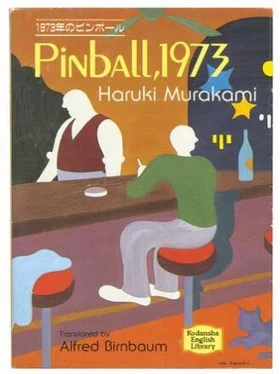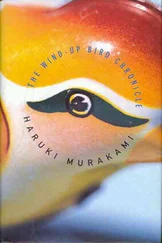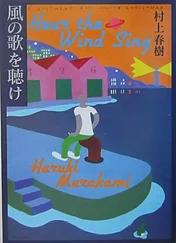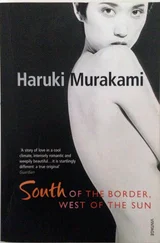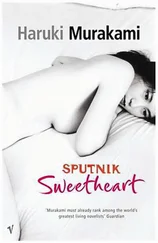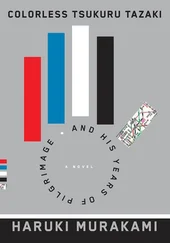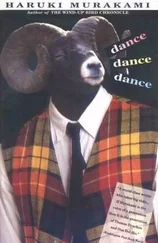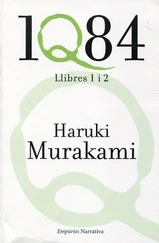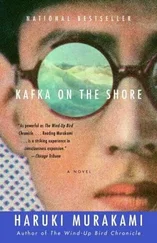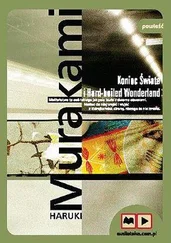Haruki Murakami - Pinball, 1973
Здесь есть возможность читать онлайн «Haruki Murakami - Pinball, 1973» весь текст электронной книги совершенно бесплатно (целиком полную версию без сокращений). В некоторых случаях можно слушать аудио, скачать через торрент в формате fb2 и присутствует краткое содержание. Издательство: Unknown publisher, Жанр: Современная проза, на английском языке. Описание произведения, (предисловие) а так же отзывы посетителей доступны на портале библиотеки ЛибКат.
- Название:Pinball, 1973
- Автор:
- Издательство:Unknown publisher
- Жанр:
- Год:неизвестен
- ISBN:нет данных
- Рейтинг книги:3 / 5. Голосов: 1
-
Избранное:Добавить в избранное
- Отзывы:
-
Ваша оценка:
- 60
- 1
- 2
- 3
- 4
- 5
Pinball, 1973: краткое содержание, описание и аннотация
Предлагаем к чтению аннотацию, описание, краткое содержание или предисловие (зависит от того, что написал сам автор книги «Pinball, 1973»). Если вы не нашли необходимую информацию о книге — напишите в комментариях, мы постараемся отыскать её.
Pinball, 1973 — читать онлайн бесплатно полную книгу (весь текст) целиком
Ниже представлен текст книги, разбитый по страницам. Система сохранения места последней прочитанной страницы, позволяет с удобством читать онлайн бесплатно книгу «Pinball, 1973», без необходимости каждый раз заново искать на чём Вы остановились. Поставьте закладку, и сможете в любой момент перейти на страницу, на которой закончили чтение.
Интервал:
Закладка:
"Thanks," I said.
"Nah, don't mention it. Hope you find it."
I went into a quiet little coffee shop, dialed the number. Five rings and a man answered the phone.
In the background I could hear the NHK seven o'clock news and a baby crying.
"I'd like to ask you about a special pinball machine, if I may," I declared after giving my name.
For a while, there was total silence on the other end of the line.
"What kind of machine might that be," said the man, turning down the sound of the television.
"A three-flipper 'Spaceship'."
The man gave it a thoughtful hmm.
"With planets and a rocketship painted on the board – "
"I know it," he interrupted, then coughed. He spoke like a teacher straight out of graduate school.
"Nineteen sixty-eight model by Gilbert & Sands, Chicago, Illinois. Of some fame as an illfated machine."
"Ill-fated machine?"
"Well, how about it?" he said. "Worth your while to get together and talk?"
We decided to meet the following evening.
* * *
After exchanging name cards, we gave the waitress our order. Two coffees. I was taken aback to find out he was a university lecturer. Somewhere in his thirties, his hair was beginning to thin, but his body looked strong and tanned.
"I teach Spanish at the university," he said "It's like sprinkling water over the desert."
I nodded eagerly.
"Get any Spanish work at your translation service?"
"I handle English, another guy does French. And that's almost more than we can manage."
"Unfortunate," he said, with his arms crossed.
Although it didn't seem so unfortunate to him at all. He fiddled around with the knot in his tie a while.
"Ever been to Spain?" he asked.
"No, unfortunately not," I said.
The coffee came and that ended our discussion of Spain. We drank our coffee in silence.
"The Gilbert & Sands Company is what you might call a latecomer to pinball," he began suddenly. "From World War II through the Korean War they were mostly involved with making bomb bay mechanisms. When the Korean operations ended, they took it as sign to diversify into other fields. Pinball machines, bingo machines, slot machines, jukeboxes, popcorn vendors – your so-called peace-time industries. They came out with their first pinball machine in 1952. Wasn't bad. Real sturdy, cheap pricetag. But not a particularly interesting machine. Or rather, as the article in Billboard put it, 'A pinball machine like a Soviet government issue woman's army brassiere.' Nonetheless it did quite well as a business venture. They exported it to Mexico, then to all of Latin America. Countries where there aren't many special technicians so they're happier with sturdy machines that don't often break down than with ones with complicated mechanisms."
He paused long enough to drink some water. It was a real pity he didn't have a slide projection screen and a long pointer.
"However, as you know, the pinball industry in America – that is to say, the whole world over — is all sewed up by four companies Gottlieb, Bally, Chicago Coin, and Williams – the so-called Big Four. Gilbert tried to punch its way in. Put up a good fight for five years. Then in 1957, Gilbert pulled out of pinball."
"Pulled out?"
He nodded and dourly drank the dregs of his coffee, then wiped his mouth with a handkerchief a couple of times. "Yeah, they gave up. The company itself was turning a profit, what with the Latin American exports and all. But they just decided to get out while the going was good, before their wounds got too deep. It turns out pinball manufacturing is a complicated business, and requires a lot of know-how. You need a team of crack technicians, and you need a supervisor to coordinate them. Next you need a nationwide network. And agents to continually stock your parts, along with enough repairmen to get to any broken machine within five hours. Well, unfortunately, our newcomer, Gilbert, didn't have what it took. So they simply swallowed their tears and withdrew, and for seven years they stuck to making vending machines, and windshield wipers for Chrysler. But that didn't mean they'd given up on pinball."
At that he pursed his lips. He took a cigarette out of his jacket pocket, tamped the end on the table-top, and lit up.
"No, they hadn't given up. They had their pride, you know. R&D was underway at an underground workshop. They secretly rounded up experts who'd left the Big Four, and formed their own project team. What's more, they gave them a huge research budget for their mission to make a machine that'd be more than a match for anything the Big Four had. And within five years, no less.
"That was in 1959. Those five years the company put to good use. Using their other products, they set up the perfect network that covered everywhere from Vancouver to Waikiki. Now all the preparations were complete.
"They came out with their first new model on schedule in 1964. It was called the 'Big Wave'."
He pulled a black scrapbook out of his leather briefcase, opened the pages, and handed it over to me. There, he'd pasted what seemed to be a magazine clipping, complete with a frontview photo of the "Big Wave," a field chart and board design, even an instruction card.
"This was a truly unique machine. Full of all sorts of gimmicks which had never been seen before. Like the selectable sequence patterns, for one. With the 'Big Wave,' you could choose the pattern best suited to your own technique. This machine caused quite a commotion.
"Of course, these ideas the Gilbert Company came up with have now become commonplace, but at the time they were state-of-the-art innovations. Moreover, the machine was extremely well built. In the first place, it was built to last. Where Big Four jobs might give out after three years, this could last a good five years. In the second place, it was geared to technique, rather than luck. After that, Gilbert brought out a number of famous machines along the same lines–the 'Oriental Express,' 'Sky Pilot,' 'Trans-America' – all highly acclaimed among true enthusiasts. The 'Spaceship' was their last model.
"The 'Spaceship' was a major switch from the previous four machines. Where those four had been packed solid with innovation upon innovation, the 'Spaceship' was frightfully orthodox and simple. There was not a single device the Big Four hadn't already used. On the contrary, you might even say the machine was really meant as a challenge to the Big Four on their own terms. They'd gained self-confidence by then."
He spoke slowly, enunciating every word. I kept nodding as I drank my coffee. I drank water when the coffee was gone, then smoked a cigarette when there was no more water.
"The 'Spaceship' – now there was a curious machine. Nothing that would really grab you at first sight. But give it a play and there's something different about it. Same flippers, same targets as all the others, but something's different. That something possessed people like a drug. I don't know why. But I do have two reasons for calling the 'Spaceship' an ill-fated machine. The first being that people never fully understood its greatness, and by the time they did begin to understand, it was too late. The second was that the company went bankrupt. They overdid it on the conscientiousness. Gilbert was absorbed by one of your conglomerates. Whereupon the head office said there was no need for a pinball division. And that was that. A total of fifteen hundred 'Spaceships' were produced, which explains why today they are regarded with such awe, and why in America fanatics will offer two thousand dollars for a 'Spaceship.' Not that there are any up for sale."
"Why is that?"
"Because nobody wants to let go of one. Nobody's capable of letting one go. A curious machine, that."
He looked at his watch out of habit when he finished, then smoked his cigarette. I ordered a second cup of coffee.
Читать дальшеИнтервал:
Закладка:
Похожие книги на «Pinball, 1973»
Представляем Вашему вниманию похожие книги на «Pinball, 1973» списком для выбора. Мы отобрали схожую по названию и смыслу литературу в надежде предоставить читателям больше вариантов отыскать новые, интересные, ещё непрочитанные произведения.
Обсуждение, отзывы о книге «Pinball, 1973» и просто собственные мнения читателей. Оставьте ваши комментарии, напишите, что Вы думаете о произведении, его смысле или главных героях. Укажите что конкретно понравилось, а что нет, и почему Вы так считаете.
